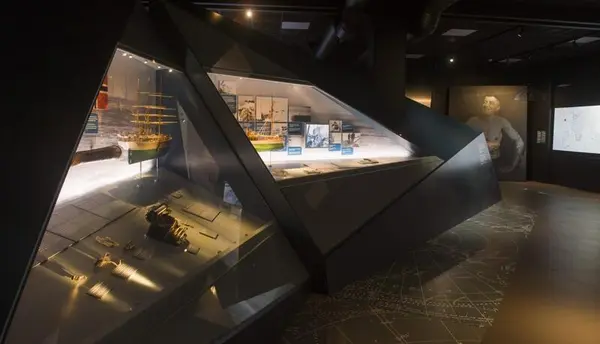- 1/1
About the exhibition
Whaling has a long and eventful history. It has not been a goal to tell the whole story in this exhibition. We have chosen to focus on themes that have previously received little attention. The exhibition focuses on Norwegian discoveries and presence in Antarctica, cultural encounters, human dignity, family life and gender roles.
The exhibition is largely based on the museum's photo and film collections, objects and archives, as well as borrowed material.
Thanks to all contributors.
Norway in Antarctica
Norway is the only country that claims areas in both the Arctic and Antarctic. Why is this so?
The Norwegian claims in Antarctica are largely based on discoveries made by whaling merchant Lars Christensen during expeditions on behalf of the Norwegian state.
Norwegian companies are currently involved in tourism and fishing in the Southern Ocean. In addition, Norway is represented with the research station "Troll".
The first part of the exhibition shows the story of when Norway really became a nation to be reckoned with in the Southern Ocean.
Whaling in all the world's oceans
Workers from many countries and different cultures eventually became part of the whaling industry. Why did Norwegians establish whaling stations along the coasts of Africa, among other places?
Whaling was a predatory activity, not only on whale populations, but also on human labor. The industrialization of whaling in Finnmark from the 1860s gave whale populations a dramatic blow. Norwegian whaling became worldwide in the period after the turn of the century, with stations in Japan, South America, southern Africa, Antarctica and many more places.
The island of South Georgia in Antarctica became a center for modern whaling. Through the global hunt, different cultures, human views and values came together.
Home Alone
What was life like in a society where many of the men were away for much of the year? The sea has always played an important role for many in Vestfold. During the whaling boom of the 1920s, many local boys and men wanted to join the sea. In an economically uncertain time, whaling could bring prosperity and stability.
During this period, whaling expeditions lasted about six to seven months. The absence of men was nothing new. However, whaling in the Southern Ocean still had a significant impact on Vestfold because it employed more men than other occupations at sea could. The departure and return created an annual cycle for the whaling families and the people around them.
